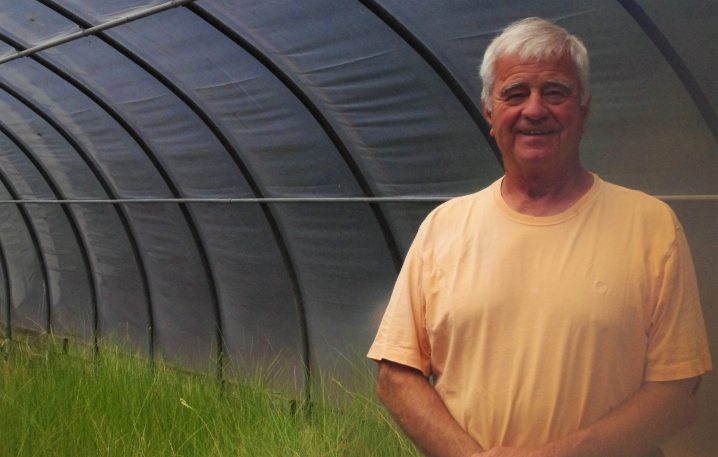
CARY — Carlton Campbell is an unassuming guy who has spent much of his life in the quiet of a greenhouse or out in the marshes, slowly revolutionizing the way our salt marshes are restored, protected and preserved.
Appropriately enough, the greenhouse where he spent much of his time sits tucked back near the woods behind the Campbells’ home and wholesale nursery in Cary. In the entrance room is a work table and old fridge, where Carlton Campbell used to store his seeds in seawater. And in the center of that greenhouse are 50 or so marsh grass plants — the last left from Campbell’s long career growing marsh grasses.
Supporter Spotlight
Inside the greenhouse, the July humidity closes in, but Campbell seems unaffected as he walks over to the grasses, pauses and points out where some of the grasses had turned brown. He peers at a few of the plants, explaining that this type of plant — spartina patens — isn’t used as often as other varieties for marsh restoration because it grows better closer to land.
Campbell’s knowledge of marsh grasses seems endless. He’s worked with them since 1979 until his retirement last year, and his dedication to his craft extends beyond growing the grass — he also cares that people have an understanding of why marsh grass is important for coastal environments.
Campbell has soft voice, and he laughs easily. He’s baffled by why he’s receiving any recognition for his work at all, but he’s grateful. He received earlier this month the lifetime achievement Pelican Award from the North Carolina Coastal Federation for his pioneering work. He says he was just doing his job.
Dedicated, Gentle Spirit
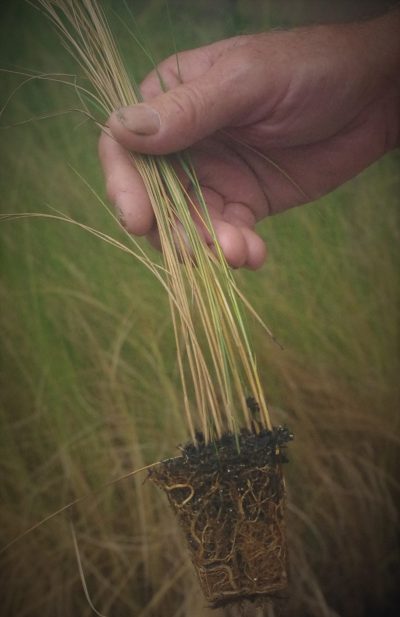
Ask anyone about Campbell, and the first thing they mention is his dedication. The second? His gentle spirit.
Erin Fleckenstein, coastal scientist and regional manager for the federation’s office in Wanchese, said Campbell revolutionized the way the federation and others could do living shoreline projects. Such approaches to erosion control incorporate more natural features, such as marsh grasses, instead of relying on wooden or plastic bulkheads.
Supporter Spotlight
“He never was one to brag or showcase his work,” she said. “He was just very humble, head down, always just wanting to get the job done and do the best he could with it, but he never wanted the recognition or credit — and those are the kind of people who deserve it most.”
Campbell prefers to talk more about the grass and the professors he worked with than about himself. He wasn’t at the awards ceremony because of another engagement, but during an interview in July, he seemed to also be a little relieved he wouldn’t have to face that attention.
“He wanted to crawl under the table,” his wife, Margaret “Phil” Campbell said, when asked what Campbell’s reaction was to winning the award.
Campbell was the first person in North Carolina to grow marsh grasses in large quantities. His work took him all over the North Carolina coast, up to Maryland and even to Brittany, France. And his nursery allowed the federation and other groups to build longer and larger living shorelines throughout the coast.
But he is quick to give credit to William Woodhouse and Ernest Seneca, two former professors in the soil science department at North Carolina State University, and to Steve Broome, a current professor at the university who accepted the award for Campbell.
“I was honored to accept that,” Broome said. “And like I said, I can’t say enough good things about Carlton. One advantage (of accepting the award) was that I could say some of the good things he certainly wouldn’t say about himself.”
Growing Up in Cary
Campbell never planned to make growing grasses his life’s work. If it hadn’t been for a chance meeting with a soil science professor, he said he likely never would have thought more about the coast than for beach trips and fishing.
Campbell’s family has lived in the Cary and Raleigh area for generations, and his home is just a few hundred feet away from his great-grandparents’ old house. “My momma’s house is right on the other side of my house right there,” he said, pointing outside of the office where his wife runs the wholesale nursery. “They built that when I was 5 years old, so I’ve been here ever since. My daddy grew up a little farther down the road.”
He and his wife have lived off Campbell Road for 51 years, and their first date was to a Cary High School football game. His wife runs a wholesale nursery on the property, and the retail store is further up the road.
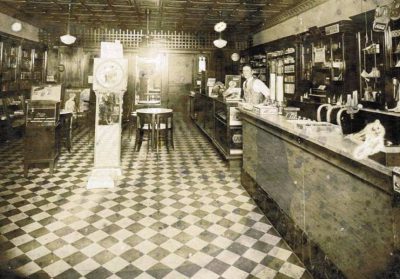
The Campbells’ property is teeming with life. Plants are all over, inside and outside of greenhouses, and even inside, Phil Campbell has put out fresh berries. On the porch, water and food bowls sit out for the cats lounging about outside. It’s peaceful. The Campbells and their son, David, who helps at the business, sit around the office table where Carlton Campbell starts his story.
In the late 1950s, he was a student at Cary High School — his parents went there, too — back when there was only one stoplight in all of Cary, outside of the Ashworth Drugs on the corner of Chatham and Academy streets.
Campbell’s uncle worked at N.C. State as an agriculture technician, and he got Campbell a summer job working for Woodhouse in the soil science department. When he started as an undergraduate student at the university in the 1960s, he kept working in the lab while getting a degree in mechanical engineering. Campbell has always loved tinkering with things. He built his first go-cart when he was 10-years-old, and he continued building new machines or modifying his truck to help count or store plants.
At the time, Woodhouse and Seneca were working on dune restoration, so Campbell spent time on the coast, planting grass and helping run experiments.
In 1966, he graduated from college and got a job at IBM as a mechanical engineer — but two years later, he left.
“I’m more of an outdoor person, and I’m also not much of a people person, either,” he said, and laughed.
Campbell then spent a few years working at a cemetery with a man he had grown up with, cutting the grass and even digging a few graves. But in 1970, as soon as a position opened again in Woodhouse’s lab, he applied and was hired. “He even gave me a raise before I ever started,” Campbell said.
Growing Grasses
At the time, Woodhouse was still working with beach grasses. But in 1979, Campbell shifted to growing marsh grasses. Texas Gulf Sulphur, which had developed a phosphate mine in Aurora on the Pamlico River, needed to restore marshes that it had destroyed for the mine, but there were no marsh grass growers in North Carolina.
N.C. State, which was involved in the restoration process, didn’t have space to grow that many plants, Campbell said.
“I just thought, I said ‘shoot, Phil’s brother had bought a greenhouse that had been left out behind my house at the edge of the woods for I don’t know, a couple of years.’ I said ‘shoot I’ll just put the greenhouse up and I’ll grow the plants.’ So that’s what I did,” he said.
Campbell can’t remember how many plants he grew that first year, but the second year he estimates he grew about 50,000 plants. And it took off from there.
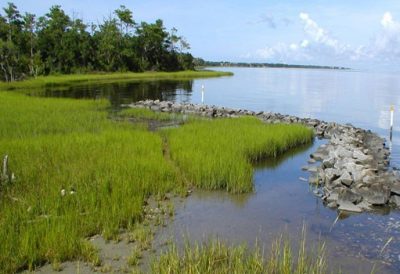
He first grew marsh grasses for a man doing shoreline restoration work in Maryland and would drive the plants up from North Carolina. In the beginning, he got his seed from the Chesapeake Bay area — and he said generally, the seed is better there. Once, he and his wife even harvested seed from the marsh grasses outside of broadcast journalist Ted Koppel’s home.
“There’s some beautiful places we saw up there. You think about the north as being people, but no it’s not that in some places,” Campbell said.
In the late 1970s and early 1980s, Campbell’s work also took him to the coast of France, where N.C. State helped with restoration work following the 1978 Amoco Cadiz tanker spill. During the cleanup, the upper six-inches of soil had been scraped off, ruining the vegetation.
Along with Broome and several other professors and technicians, Campbell went to Brittany, France a couple of times to plant marsh grasses.
As he talked about his trips there, Phil Campbell typed away on the computer, pulling up photos from the mid-1980s that showed the grass growing in. Carlton Campbell didn’t how the plantings had turned out or if it had even helped — he just did the work.
“That’s where we planted,” he said, looking at the photos. “Well I’ll be darned. I hadn’t ever seen that.”
Campbell feels most at home in North Carolina.
Seed Harvesting
With permission from property owners, Campbell, sometimes along with his family, harvested seeds up and down the North Carolina coast, from Jockey’s Ridge State Park down to Southport. At Oregon Inlet once, he and his family had collected about three bags of seeds before they were reported for being on National Park Service property after they had mistakenly ventured over there. The ranger made them throw away all the seeds into the water.
“Man, that was the prettiest seed we ever had. God, they were fat. Gorgeous seed,” Phil Campbell said. “And the problem is, I mean, (the seeds) weren’t even gonna come up, they were just gonna float away and rot. He could’ve at least let us grow them out and give them back to the Parks Service.”
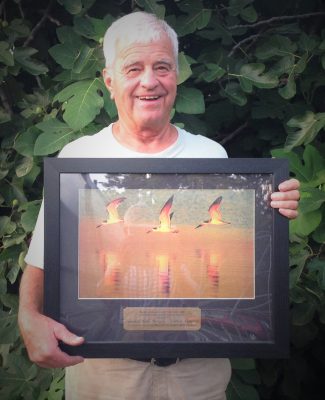
Eventually, word of Campbell and his marsh grass got around to the federation, which contacted him in 1999. With his help, the federation was able to expand its living shorelines program. He grew and delivered grasses to places all along the coast, helping federation staff unload before heading back home.
“I’m guessing he left before the sun came up to get them down here in the morning when they would be as fresh as possible,” said Tracy Skrabal, a coastal scientist and manager for the federation’s office in Wrightsville Beach. “I know he would always try to find a good breakfast.”
Fleckenstein and Skrabal said he would always go beyond what was required to make sure the federation got the best possible plants.
Campbell even gave advice on how to grow it for some of the federation’s education activities.
“It wasn’t just about putting plants in the ground, it’s about educating people. He was really part of that whole project,” Skrabal said. “He’s just a sweet and gentle and kind man whom I feel like I’ve known forever.”
One Last Gift
Even now that he’s retired, Campbell still has one last gift for the federation — he plans to donate those last few plugs of marsh grass in the greenhouse.
Campbell gently pulls out one of the plants, examining its roots. Standing in the greenhouse, it’s easy to visualize how many plants it once housed, and how many of those plants spread thousands of feet along the coast.
Back outside the wholesale office, Campbell climbs out of the golf cart and jokes with his son. The cats are sleeping nearby, and the late-morning sun is starting to peak out from the clouds. It’s the end of the interview, and even after all he’s talked about and shown, he still won’t take credit.
“Be sure to tell them it started with the doctors, that’s what’s important,” he said. “If it wasn’t for them, I wouldn’t be doing the marshes. I just put to use what I learned.”
Campbell might not think he contributed much by just growing the plants, but his family and colleagues certainly disagree with him on that.







